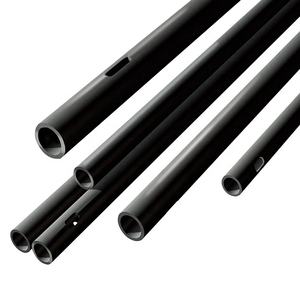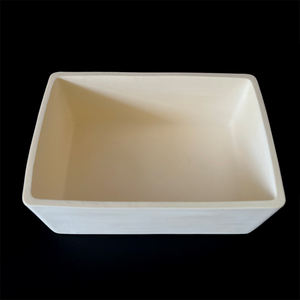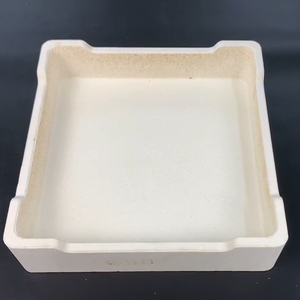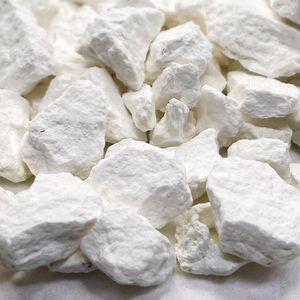Professional industry ceramic supplier, silicon nitride, silicon carbide, aluminum nitride and any other kinds of ceramics.
PRODUCT PARAMETERS
Description
Overview of Refractory Heat Resistance High 95% 99% Porous Hollow Al2o3 Alumina Ceramic Tube/rod
Refractory Heat Resistance High 95% 99% Porous Hollow Al2o3 Alumina Ceramic Tube/rod are non-metallic substances designed to withstand extreme temperatures exceeding 1,000°C, along with harsh chemical and physical stresses. They are essential for the inner linings of industrial furnaces, kilns, reactors, and incinerators, providing critical thermal insulation and structural integrity in processes ranging from metal and glass manufacturing to power generation.
Features of Refractory Heat Resistance High 95% 99% Porous Hollow Al2o3 Alumina Ceramic Tube/rod
-
High-Temperature Resistance: Maintain structural strength and stability at temperatures often exceeding 1500°C.
-
Excellent Thermal Shock Resistance: Withstand rapid heating and cooling cycles without cracking or spalling.
-
Chemical Inertness: Resist corrosion and degradation from slags, molten metals, and acidic or basic environments.
-
High Mechanical Strength: Possess considerable load-bearing capacity at operating temperatures.
-
Low Thermal Conductivity: Provide effective insulation to improve energy efficiency and protect furnace structures.
-
Abrasion Resistance: Withstand erosion from solid materials and gas flows.
Specification of Refractory Heat Resistance High 95% 99% Porous Hollow Al2o3 Alumina Ceramic Tube/rod
These alumina tubes and rods manage extreme warm. They are made from Al2O3, alumina ceramic. The purity is very high. You find them in 95% purity or 99% purity. This high pureness gives superb efficiency.
The material is porous. This implies it has small openings throughout. It is additionally hollow inside. The hollow form is vital for several work. These tubes and rods withstand heat superbly. They are called refractory. This implies they stand up to very heats. They stay secure and strong under warm stress and anxiety.
The permeable nature aids also. It allows gases or fluids to go through occasionally. Or it offers insulation. The hollow style saves weight. It additionally enables circulation inside the tube. You can utilize them for sensors. They shield thermocouples or various other probes. They are good for heater components. They function well in kilns.
Numerous industries need them. The chemical industry utilizes them. The steel market uses them. Laboratories utilize them. They are dependable under tough conditions. They withstand rust. They take care of thermal shock. Sudden temperature changes are fine.
Sizes are flexible. Tubes come in lots of sizes. Poles come in numerous thicknesses. Sizes can be tailored. Wall surface density can be changed. This depends on your requirement. The high pureness alumina is strong. It lasts a very long time. It does not wear out quickly. It maintains its form. It gives great electric insulation.
Applications of Refractory Heat Resistance High 95% 99% Porous Hollow Al2o3 Alumina Ceramic Tube/rod
These tubes and rods are made from high-purity alumina. Alumina is aluminum oxide. It’s composed as Al2O3. They are hollow inside. They are likewise permeable. This implies they have tiny holes throughout. The purity is really high. It is either 95% or 99%. This makes them excellent for warm. They resist very high temperatures. This is called refractory warmth resistance. They manage severe problems well.
These ceramic components are solid. They have excellent mechanical strength. They withstand wear. They are hard. They are additionally chemically steady. This indicates they do not react easily with various other products. Acids or bases generally don’t damage them. They stay dependable gradually. Their framework is open and permeable. This permits gases or fluids to pass through. This serves in several processes.
One major usage remains in high-temperature furnaces. They serve as safety sheaths. They protect thermocouples or sensors. These procedure temperature level inside the heating system. The tubes safeguard the delicate instruments. An additional usage is as burner parts. They help distribute fuel gas evenly. This helps combustion occur easily. They are located in commercial heaters. They are additionally made use of in lab equipment.
These tubes and rods serve as supports. They hold catalyst materials. Catalysts accelerate chemical reactions. The porous framework aids here. It enables catalysts to reach the stimulant surface. This prevails in chemical handling. They are also made use of in filtration. Warm gases can be filtered through them. They catch bits or pollutants. This happens in metal treatment or exhaust systems.
They are utilized for liquified metal handling. They can direct fluid metal flows. Their high warm resistance is essential. They stand up to the extreme warm of liquified metals. They discover functions in aerospace. They locate functions in metallurgy. They discover duties in power production. Their unique homes make them vital. They work where various other products would fall short.
Company Profile
Tanki New Materials Co.Ltd. focus on the research and development, production and sales of ceramic products, serving the electronics, ceramics, chemical and other industries. Since its establishment in 2015, the company has been committed to providing customers with the best products and services, and has become a leader in the industry through continuous technological innovation and strict quality management.
Our products includes but not limited to Aerogel, Aluminum Nitride, Aluminum Oxide, Boron Carbide, Boron Nitride, Ceramic Crucible, Ceramic Fiber, Quartz Product, Refractory Material, Silicon Carbide, Silicon Nitride, ect. please feel free to contact us.

Payment Methods
T/T, Western Union, Paypal, Credit Card etc.
Shipment Methods
By air, by sea, by express, as customers request.
5 FAQs of Refractory Heat Resistance High 95% 99% Porous Hollow Al2o3 Alumina Ceramic Tube/rod
These tubes handle extreme heat well. They are made from alumina ceramic. Alumina is aluminum oxide. These tubes are porous. Porosity means they have tiny holes. The holes are small but connected. This allows fluids to pass through. Air or liquids can flow easily. The alumina content is high. It ranges from 95% to 99%. Higher alumina means better performance. Heat resistance improves with more alumina. They resist chemical corrosion too. Many acids and alkalis don’t damage them. This makes them very durable.
What temperatures can they withstand? They handle very high heat. Their maximum use temperature is high. It often exceeds 1600°C. They maintain strength at these temperatures. They don’t soften or melt easily. Sudden temperature changes are okay too. They resist thermal shock well. This means they won’t crack quickly. Cooling down fast is usually fine. Heating up fast is usually fine. This is important for industrial processes.
Why are they porous? The porosity is intentional. It’s created during manufacturing. Special techniques form the tiny holes. The holes form a network inside. This open structure allows flow. Gases or liquids filter through. The porosity level can be controlled. Different levels suit different jobs. Higher porosity allows more flow. Lower porosity might be stronger. The specific pore size matters too.
Where are they used? They work in tough environments. Furnaces and kilns use them often. They serve as thermocouple protection tubes. They protect sensors from heat and chemicals. Filter systems use them for hot gases. Molten metal filtration is common. They separate impurities effectively. Burner systems incorporate them too. They distribute fuel gases evenly. Lab equipment uses them for high-temperature experiments. They are reliable components.
How strong are they? They are quite strong for ceramics. Their strength is good. They resist breaking under load. They handle compression forces well. They also resist bending forces. Their strength remains at high temperatures. This is a key advantage. Other materials weaken with heat. These tubes stay strong. They are brittle like most ceramics. They don’t bend like metal. Handle them carefully. Avoid strong impacts. Chipping or cracking can happen. Proper handling prevents damage.
REQUEST A QUOTE
RELATED PRODUCTS

Hot Cordierite Ceramic Ferrule Wear-Resistant For Welding Studs For Refractory Applications

High Temperature Resistance Alumina Refractory Brick for Industry Furnace

High Heat Resistance Refractory Cordierite Mullite Ceramic Part For

99.9% Arena De Silice/cuarzo Para Uso Refractario, Calidad Superior Silica/quartz Sand For Refractory Use, Superior Quality

Refractory Insulating Castable, Refractory Lining Castables For Induction Furnace



